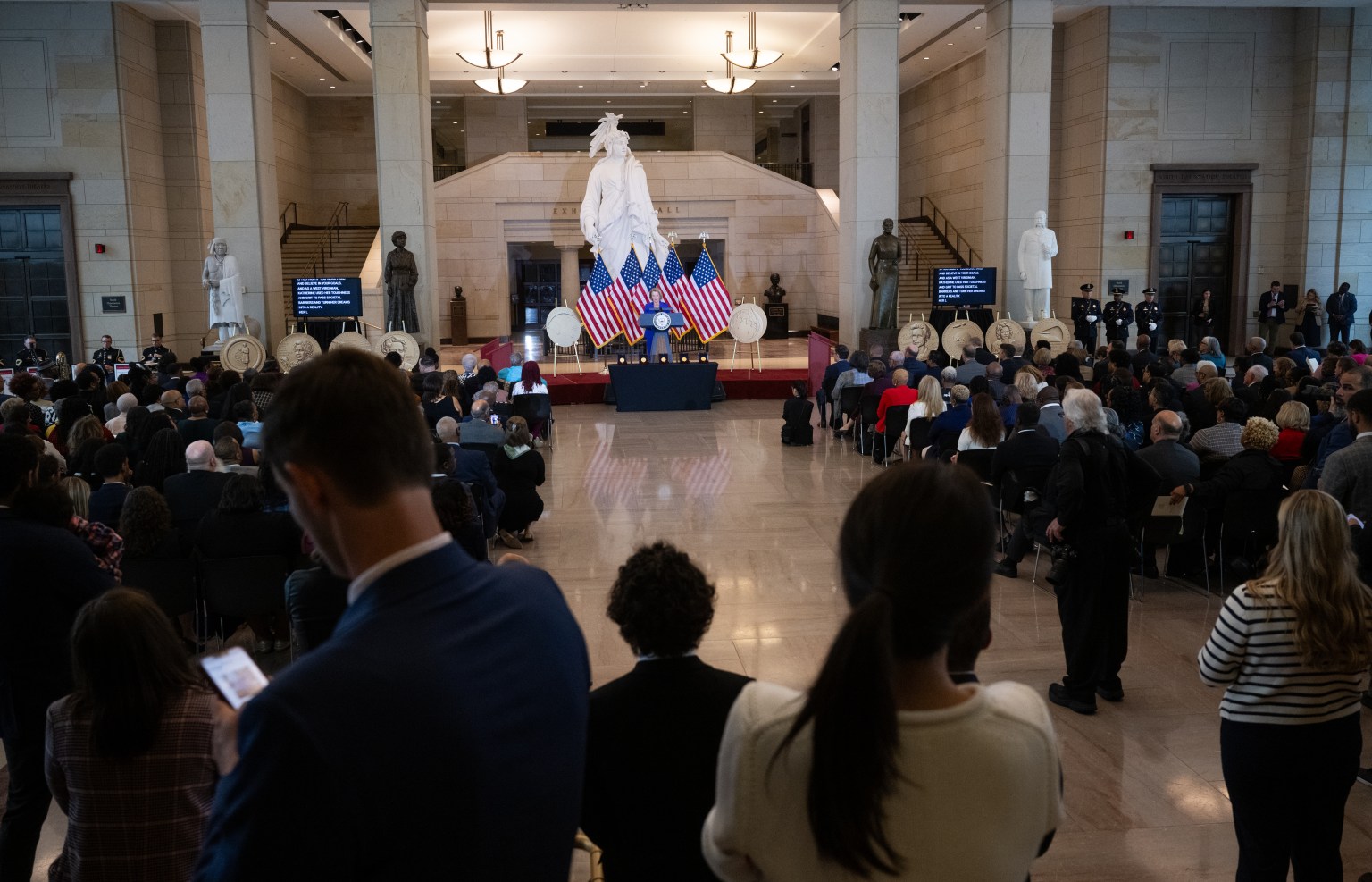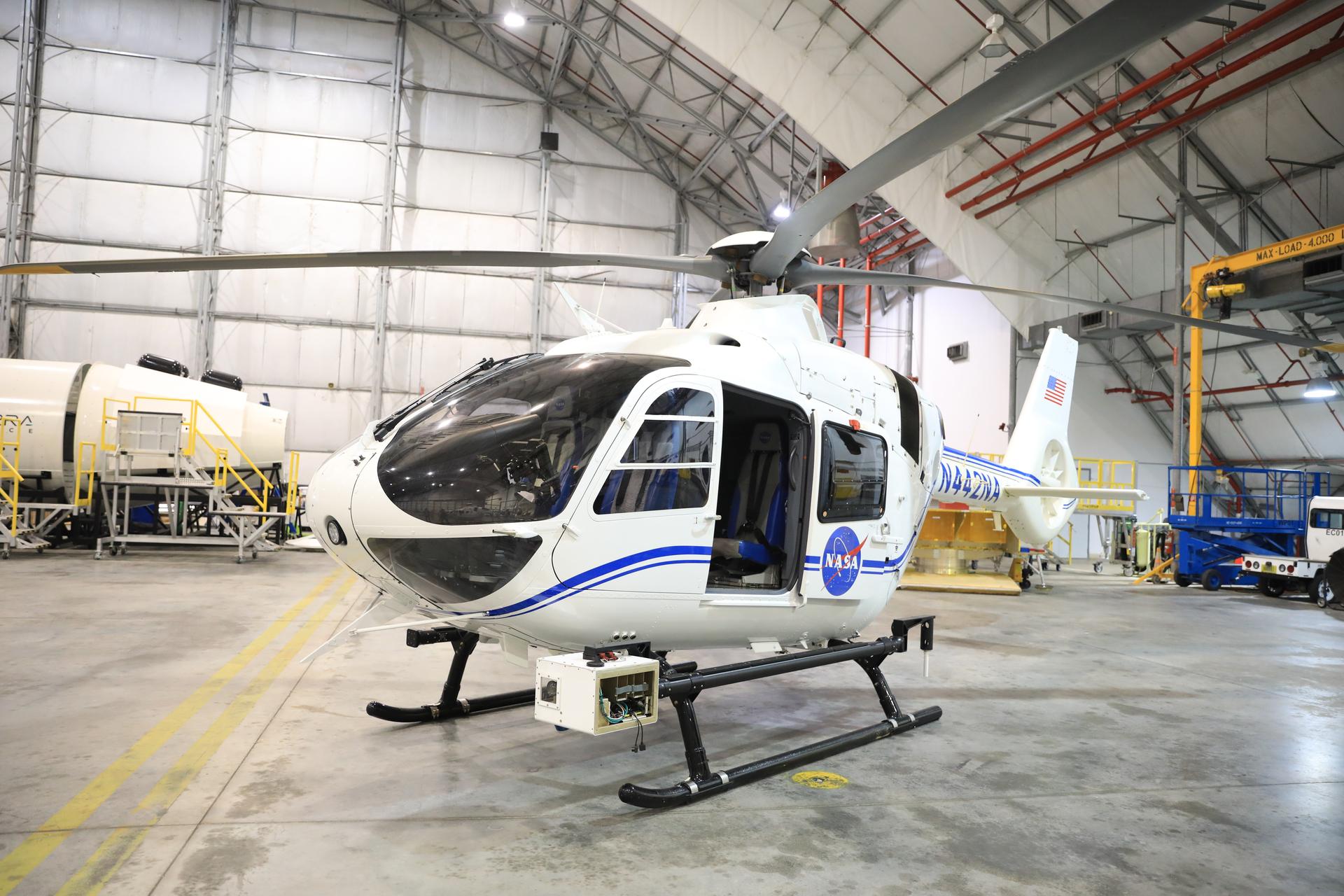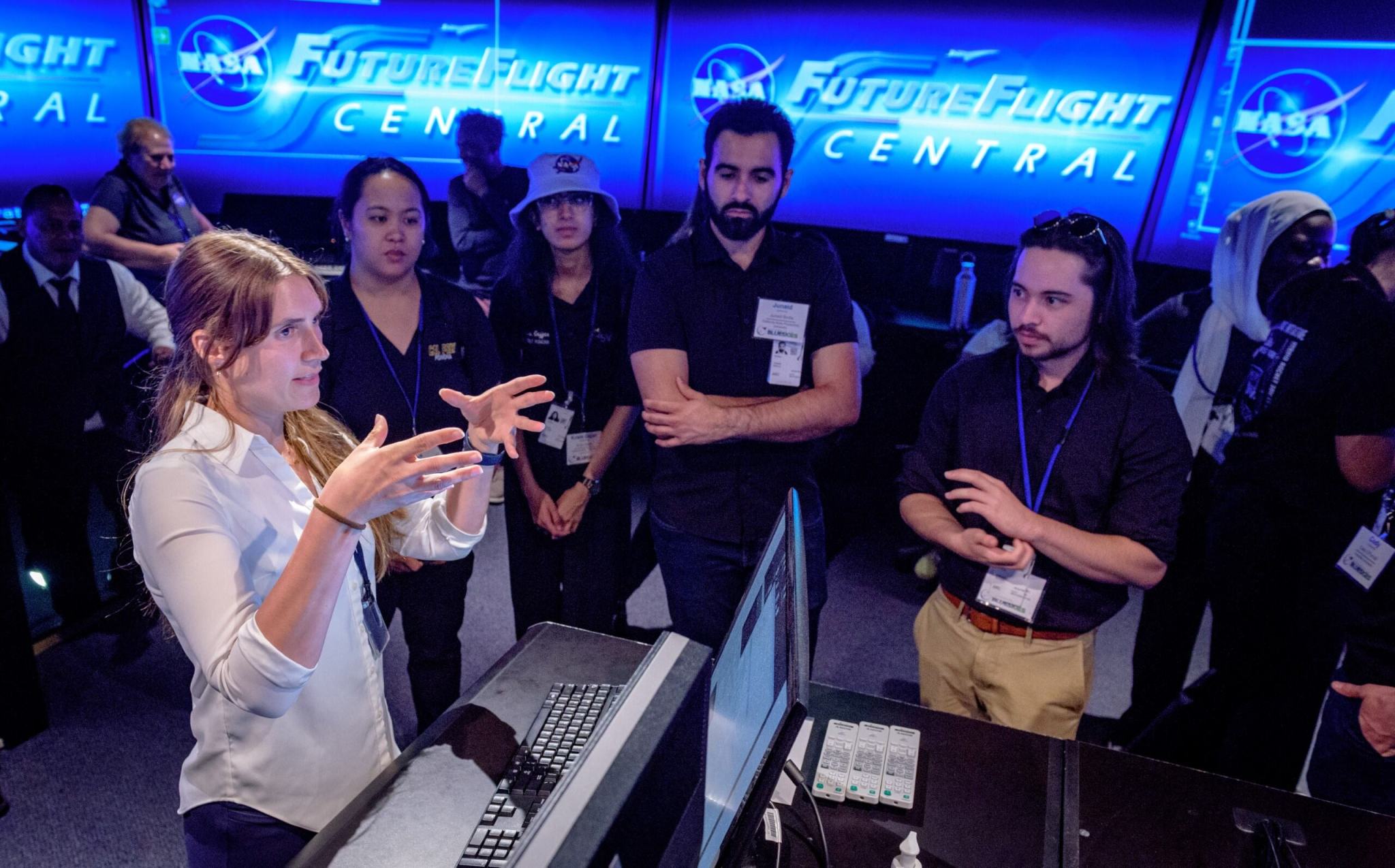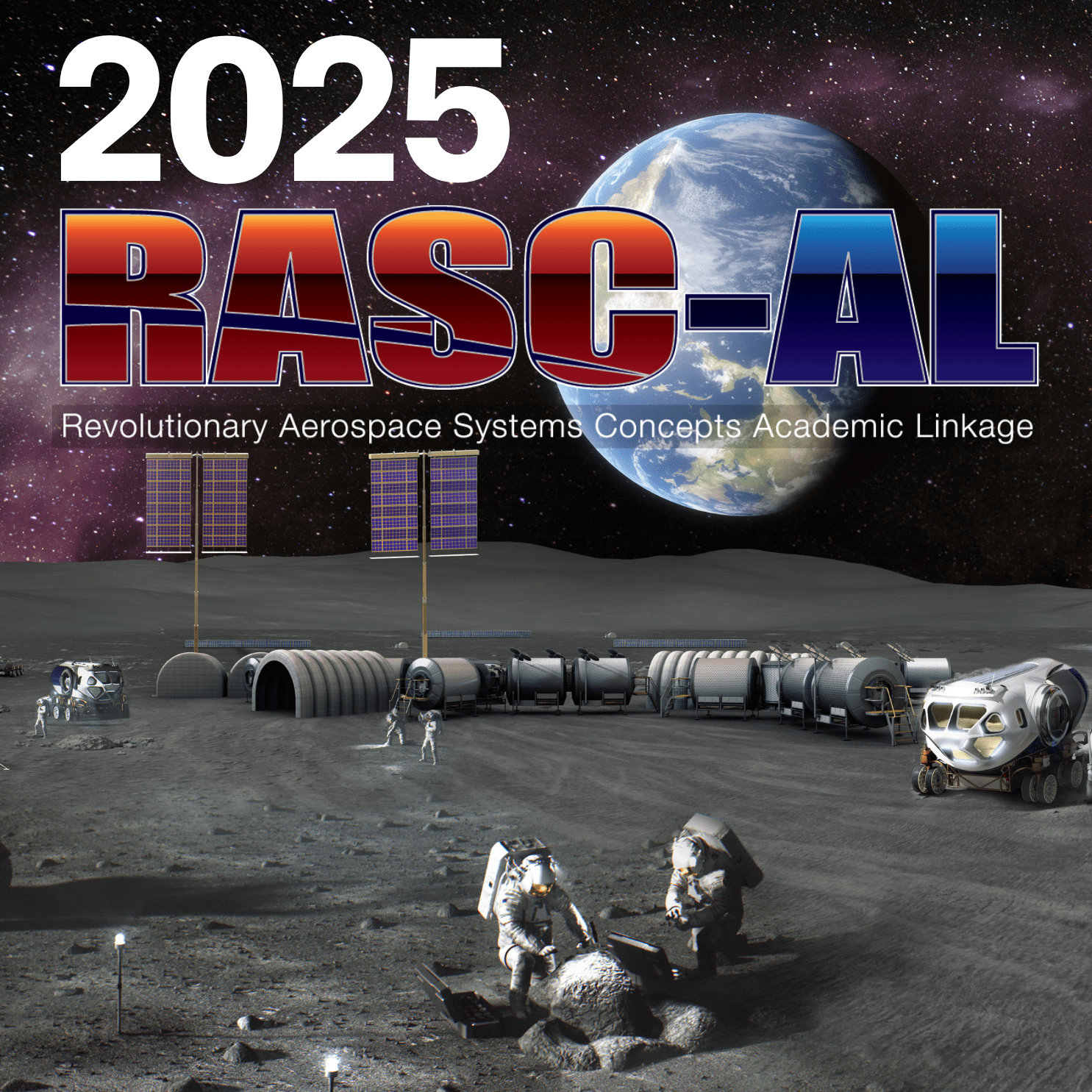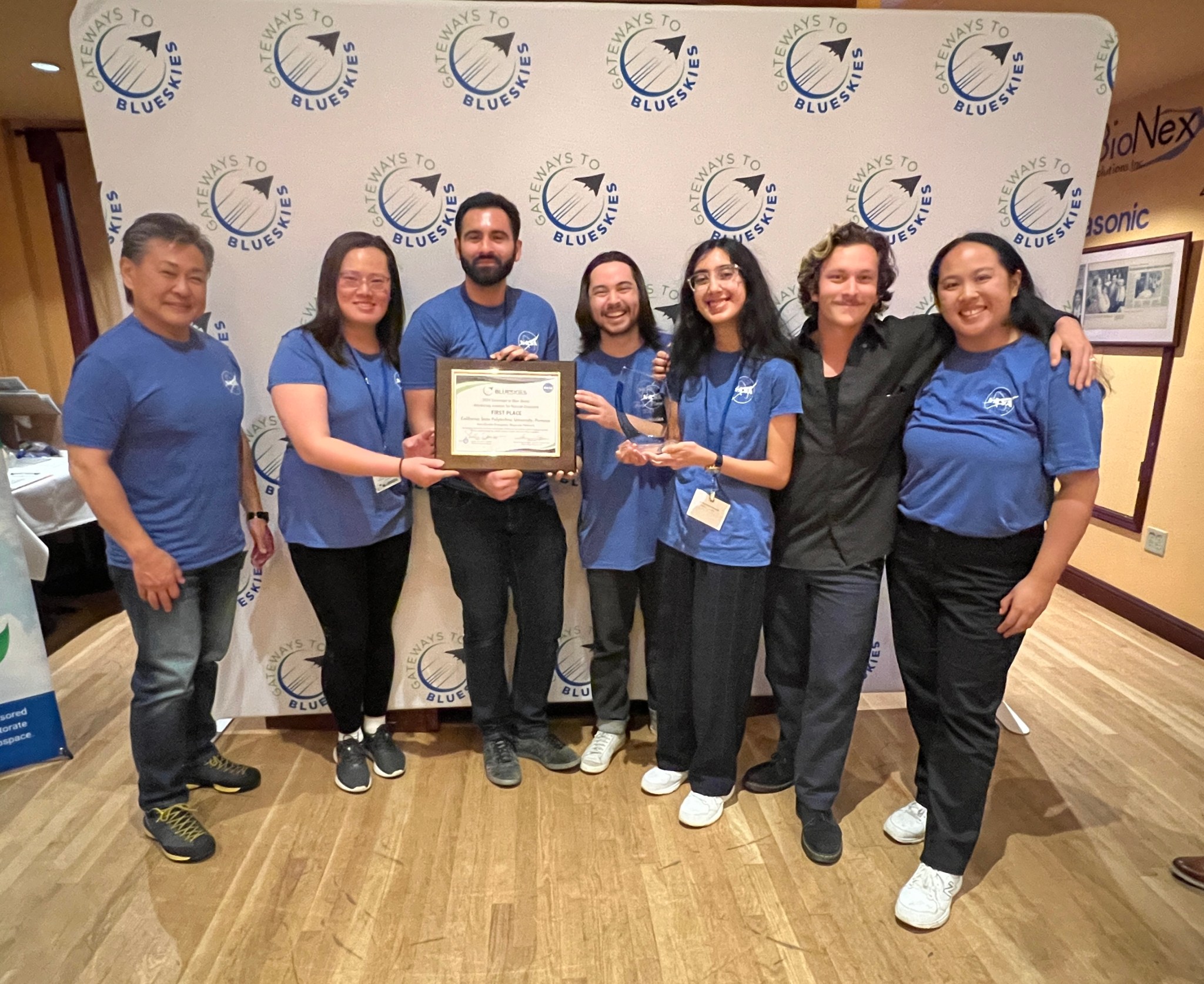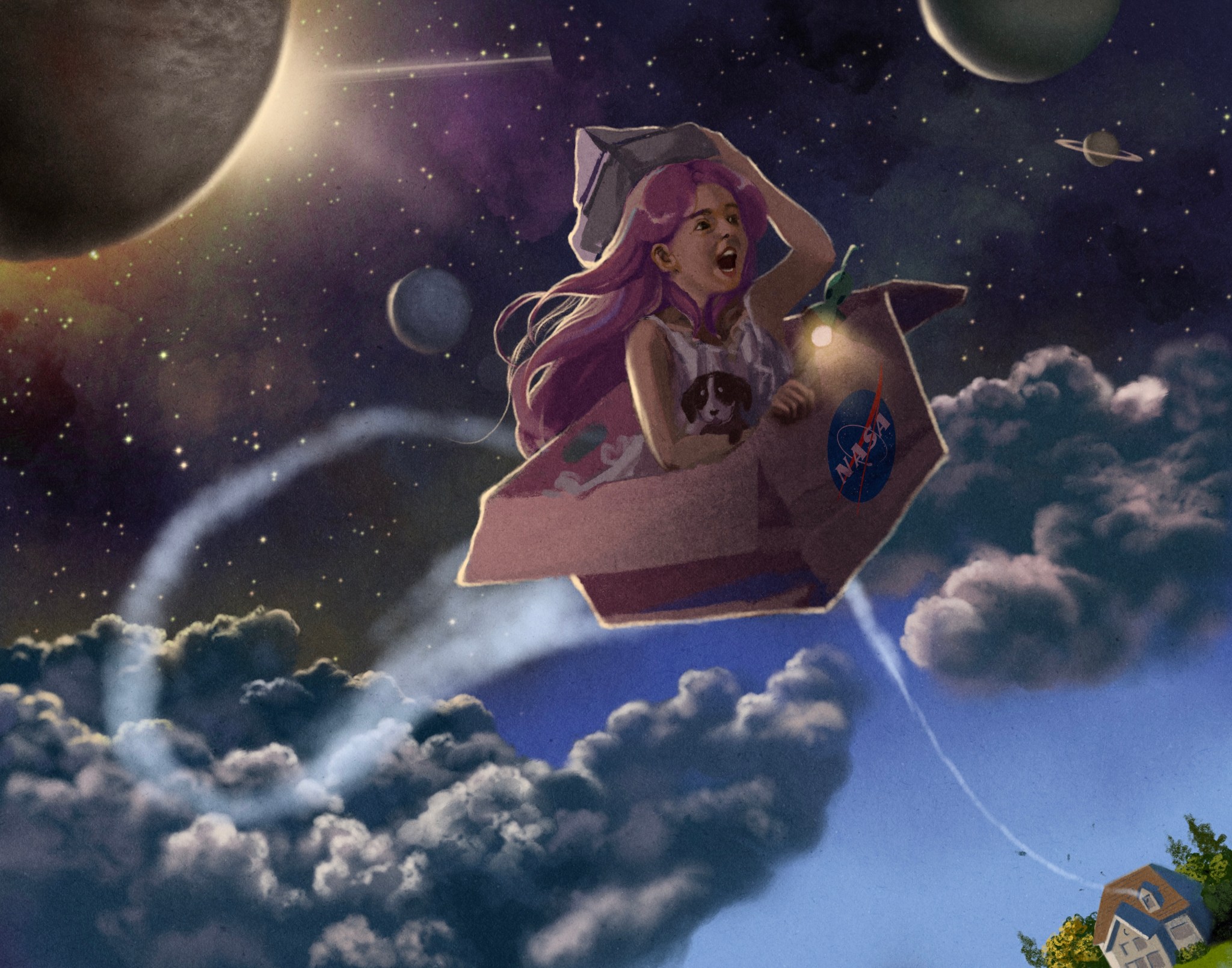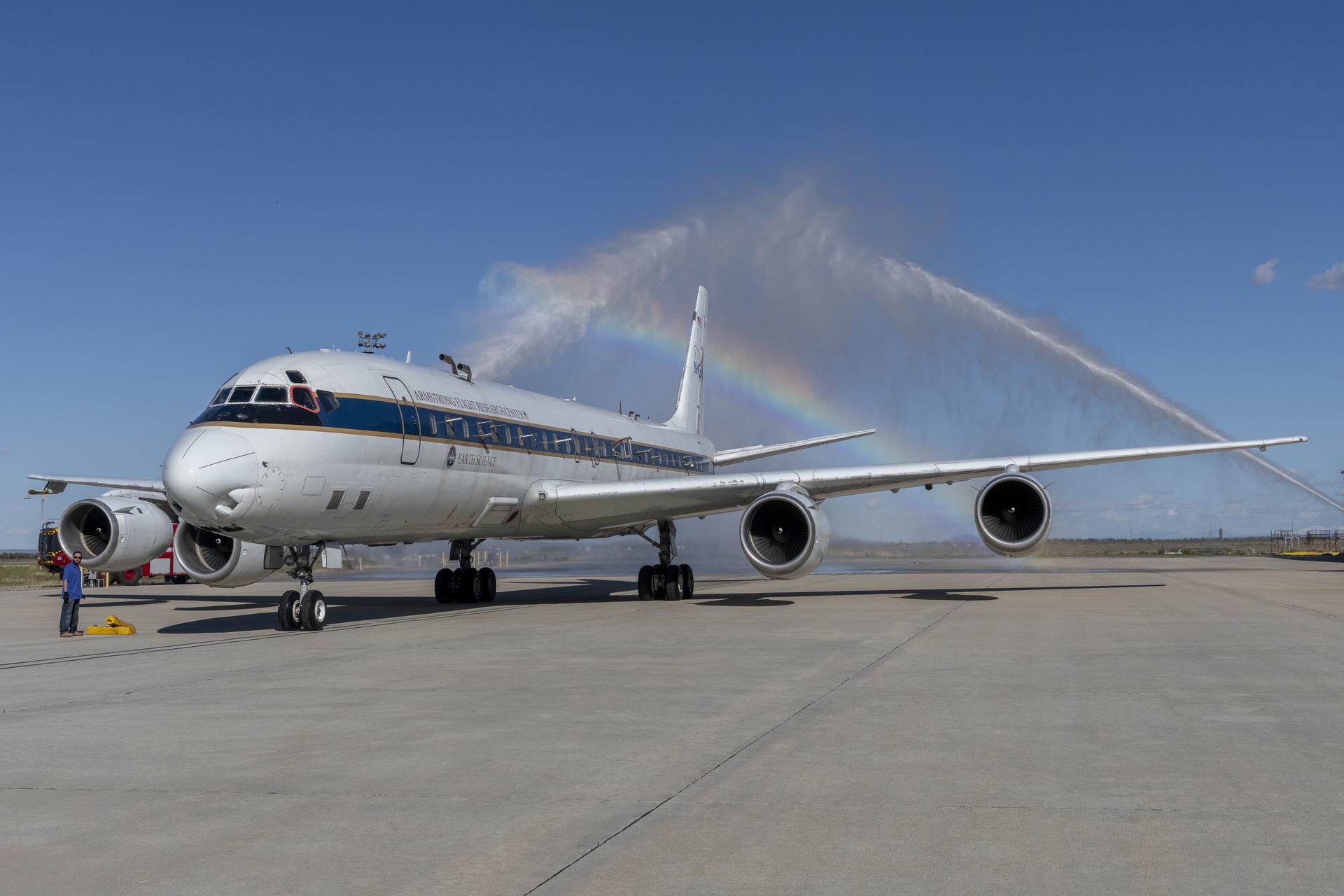Credit: NASA NASA has selected Metis Technology Solutions Inc. of Albuquerque, New Mexico, to provide engineering services as well as develop and maintain software and hardware used to conduct simulations for aerospace research and development across the agency. The Aerospace Research, Technology, and Simulations (ARTS) contract is a hybrid cost-plus-fixed-fee and firm-fixed-price contract with an indefinite-delivery/indefinite-quantity component and has a maximum potential value of $177 million. The performance period begins Sunday, Dec. 1, 2024, with a one-year base period, and options to extend performance through November 2029. Under this contract,…
Read MoreTag: Langley Research Center
NASA’s Hidden Figures Honored with Congressional Gold Medals
4 Min Read NASA’s Hidden Figures Honored with Congressional Gold Medals Sen. Shelly Moore Capito (R-WV), delivers remarks during a Congressional Gold Medal ceremony recognizing NASA’s Hidden Figures, Wednesday, Sept. 18, 2024, in Emancipation Hall at the U.S. Capitol in Washington. Credits: NASA/Joel Kowsky A simple turn of phrase was all it took for U.S. Sen. Shelley Moore Capito of Katherine Johnson’s home state of West Virginia to capture the feeling in Emancipation Hall at the U.S. Capitol in Washington. “It’s been said that Katherine Johnson counted everything,” she said.…
Read MoreNASA Selects Langley Research Center Support Contractor
Credit: NASA NASA has awarded the Center, Operations Maintenance, and Engineering II contract to Jacobs Technology Inc. of Tullahoma, Tennessee, to support operations at the agency’s Langley Research Center in Hampton, Virginia. The contract is a cost-plus-fixed-fee indefinite-delivery/indefinite-quantity contract with a maximum potential value of $973.7 million. Following a phase-in period that starts Tuesday, Oct. 1 and runs to Dec. 31, the contract will have a base period of 15 months followed by five optional periods that could extend the contract to the end of 2035. Under this contract, Jacobs…
Read MoreNASA Develops Pod to Help Autonomous Aircraft Operators
The NASA Airborne Instrumentation for Real-world Video of Urban Environments (AIRVUE) sensor pod is attached to the base of a NASA helicopter at NASA’s Kennedy Space Center in Cape Canaveral, Florida in April 2024 before a flight to test the pod’s cameras and sensors. The AIRVUE pod will be used to collect data for autonomous aircraft like air taxis, drones, or other Advanced Air Mobility aircraft. NASA/Isaac Watson For self-flying aircraft to take to the skies, they need to learn about their environments to avoid hazards. NASA aeronautics researchers recently…
Read MoreCollegiate Teams to Focus on Aviation Solutions for Agriculture in 2025 Gateways to Blue Skies Competition
4 min read Preparations for Next Moonwalk Simulations Underway (and Underwater) Students attending the 2024 Blue Skies Competition Forum toured NASA’s Ames Research Center in California. NASA In the 2025 Gateways to Blue Skies Competition, the theme is AgAir: Aviation Solutions for Agriculture. NASA asks collegiate teams to investigate either new or improved aviation capabilities that could assist the agriculture industry by improving production, efficiency, environmental impact and extreme weather/climate resilience. The agriculture industry plays a vital role in providing food, fuel, and fiber for the global population. However, it…
Read MoreExploring Deep Space: NASA Announces 2025 RASC-AL Competition
3 min read Preparations for Next Moonwalk Simulations Underway (and Underwater) NASA has officially announced the 2025 Revolutionary Aerospace Systems Concepts – Academic Linkage (RASC-AL) competition. Credit: National Institute of Aerospace NASA has officially announced the 2025 Revolutionary Aerospace Systems Concepts – Academic Linkage (RASC-AL) competition, an initiative to fuel innovation for aerospace systems concepts, analogs, and technology prototyping through university engagement. RASC-AL, one of NASA’s longest-running student competitions, solicits concepts from the next generation of engineers and scientists to explore the future of deep space exploration. RASC-AL is seeking…
Read MoreNASA Returns to Arctic Studying Summer Sea Ice Melt
5 Min Read NASA Returns to Arctic Studying Summer Sea Ice Melt NASA's Gulfstream III aircraft taxis on the runway at Pituffik Space Base as it begins one of its daily science flights for the ARCSIX mission. Credits: NASA/Gary Banziger What happens in the Arctic doesn’t stay in the Arctic, and a new NASA mission is helping improve data modeling and increasing our understanding of Earth’s rapidly changing climate. Changing ice, ocean, and atmospheric conditions in the northernmost part of Earth have a large impact on the entire planet. That’s…
Read MoreWinners Announced in Gateways to Blue Skies Aeronautics Competition
4 min read Preparations for Next Moonwalk Simulations Underway (and Underwater) Team “Rumble Ready” from California State Polytechnic University, Pomona, comprised of (from left to right) Professor Mark Gonda, Nicole Xie, Junaid Bodla, Jordan Ragsac, Krishi Gajjar, Gerald McAllister III, and Leara Dominguez, took home first place at the 2024 Gateways to Blue Skies Forum held May 30-31 at NASA Ames Research Center. National Institute of Aerospace The California State Polytechnic University, Pomona, team, with their project titled “Aero-Quake Emergency Response Network,” took first place at the third annual Gateways…
Read MoreWashington State High Schooler Wins 2024 NASA Student Art Contest
2 min read Preparations for Next Moonwalk Simulations Underway (and Underwater) A 12th grade artist with a passion for NASA and space took home the top prize for the 2024 NASA Student Art Contest, a nationwide competition hosted by NASA’s Langley Research Center in Hampton, Virginia. Esther Lee, of Washington State, was selected as the grand prize winner for her submission “Beyond Imagination,” which depicts a young girl and her dog in a cardboard box exploring the universe. Lee said she was inspired by memories of her adventurous childhood. “Beyond…
Read MoreNASA’s DC-8 Completes Final Mission, Set to Retire
2 min read Preparations for Next Moonwalk Simulations Underway (and Underwater) The DC-8 aircraft returned to NASA’s Armstrong Flight Research Center Building 703 in Palmdale, California, on April 1, 2024, after completing its final mission supporting Airborne and Satellite Investigation of Asian Air Quality (ASIA-AQ). The aircraft and crew were welcomed back with a celebratory water salute by the U.S. Air Force Plant 42 Fire Department. NASA/Steve Freeman After 37 years of successful airborne science missions, NASA’s DC-8 aircraft completed its final mission and returned to the agency’s Armstrong Flight…
Read More
